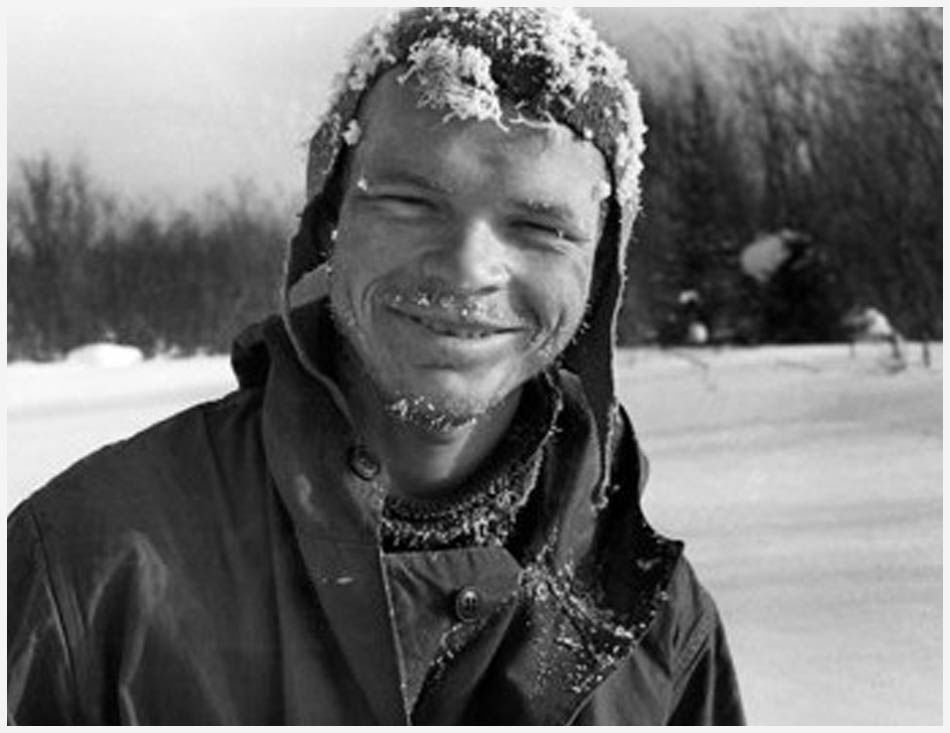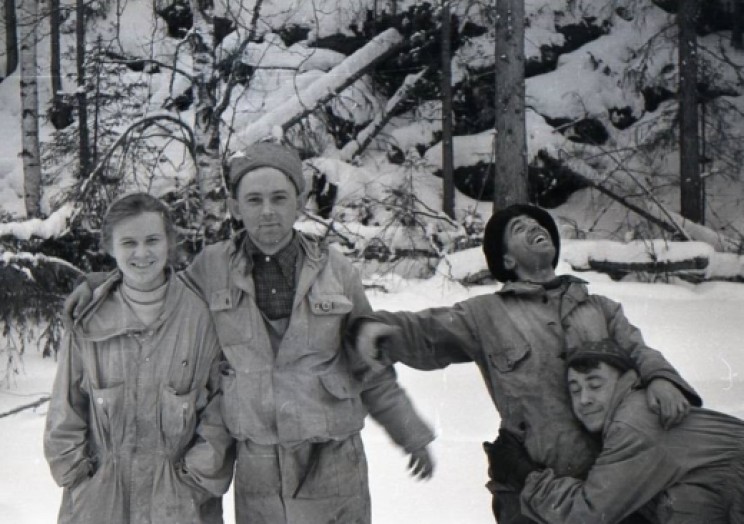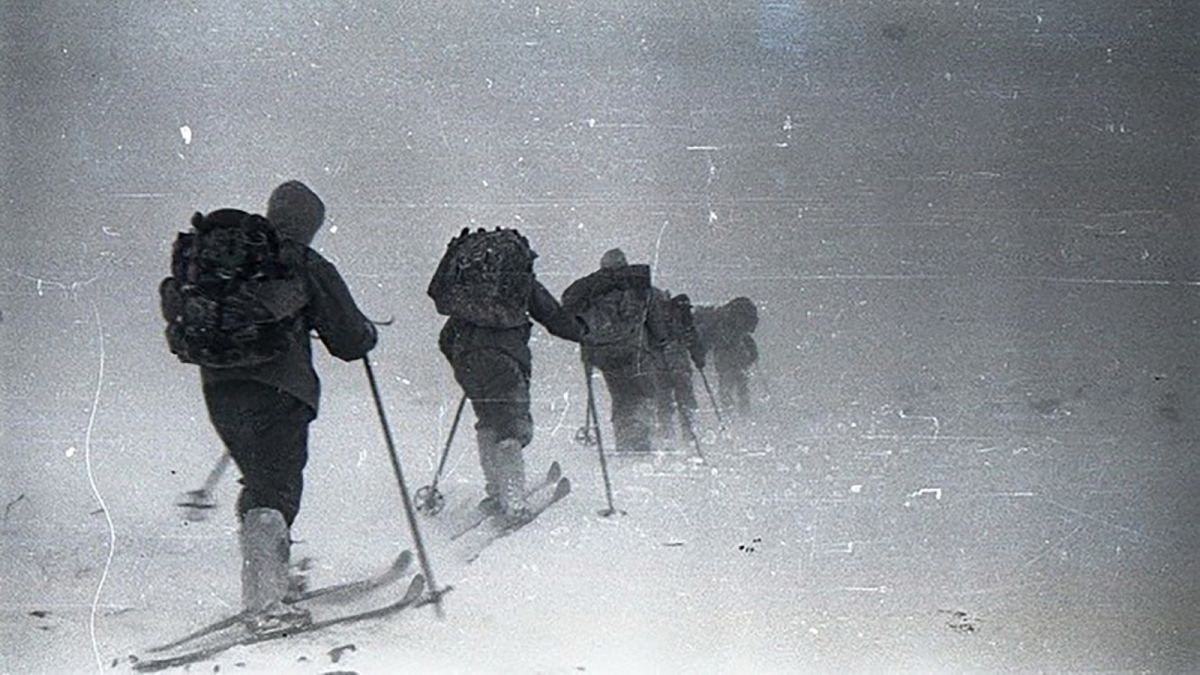The bizarre death of nine Russian skiers in the Ural Mountains during what is now known as the Dyatlov Pass Incident remains one of the strangest cases of unexplained deaths on record. Even an official reopening of the inquiry in 2015 failed to come up with a definitive answer, and alternative theories ranging from secret military testing to an attack by a yeti have surfaced over the years since.
In 1959, 10 experienced mountaineers and skiers set out on a skiing expedition into the Northern Ural mountains. Led by 23-year old Igor Dyatlov, the group was made up primarily of students from the Ural Polytechnical Institute. With the exception of one member, 38-year old Semyon Zolotaryov, all of the party were in their early 20s.

The eight men and two women of the party set out for what was intended to be a 16-day round trip on the 23rd January. Their objective was to reach Mount Otorton in the northern Ural Mountains, a remote and imposing peak the name of which translates as ‘don’t go there’ in the tongue of the native Mansi people of the region. Using first trains and later lorries to reach the village of Vizhai, the group then set out on foot towards Otorton. One day into the hike 21-year old Yuri Yudin turned back due to ill-health, leaving the remaining nine members of the expedition to continue.
Before the group’s departure, Dyatlov had indicated that he would contact the university’s sports club via telegram on their return to Vizhai, no later than the 12th February. However, on arriving in the area, Dyatlov had realised his estimate may have been somewhat wide of the mark, and observed to Yudin before his departure that they may return later. Therefore, after Dyatlov failed to make contact by the 12th February, the alarm was not initially raised.

After growing concerns amongst the skiers’ families and mounting pressure on the institute to take action, a volunteer search party made up of staff and students was dispatched on the 20th February. They were subsequently joined in the search by both the Soviet army and the Militsiya, including aircraft.
Six days into the search rescuers found the group’s tent, badly damaged and abandoned on the east slopes of Kholat Syakhl. Like Ortorton, Kholat Syakhl has a particularly ominous name in the native tongue of the region: the Dead Mountain. The tent had been ripped open and partially covered in snow.

While the occupants were missing, their equipment, skis and even their clothing and shoes remained in the tent. Closer examination found that the tent had been slit open from the inside, and nine sets of footprints, many barefoot or in just socks, lead away from the campsite into the snow.
Following the tracks for around a mile, the searchers found the remains of a fire at the base of a large Siberian pine. Close by, they found the first two bodies, those of 23-year old Yuri Krivonischenko and 21-year old Yuri Doroshenko. Both had died from hypothermia, and were dressed only in their underwear.
Further searches resulted in the discovery of three further bodies between the camp fire and the tent, all thought to have succumbed to hypothermia while attempting to return to the tent. Those found were 22-year old Zinaida Kolmogorova and 23-year old Rustem Slobodin, as well as party leader Igor Dyatlov. The theory that they had gathered at the site of the fire and then attempted to return to the tent was supported by the observation of broken boughs up much of the height of the tree, suggesting one member of the group had climbed up to try and establish the location of the tent.

The remaining four members of the expedition took significantly longer to find, eventually being found over two months later on the 4th May. They were discovered buried under more than four metres of snow at the bottom of a ravine, around 75 metres from the site of the fire. All four were better dressed than their companions and appeared to have stripped the dead of their cold-weather clothing to use themselves. The four found in the ravine were later identified as Lyudmila Dubinina (20), Alekseevich Zolotaryov (38), Nikolai Thibeaux-Brignolles (23) and Alexander Kolevatov (24).
All four bodies had significant tissue damage. Dubinina’s injuries have been most widely reported, given that she was missing her tongue, eyes, lips and some facial tissue. She had also suffered a severe chest injury. Two of the other bodies found in May also showed signs of injuries caused by severe blunt force trauma, compared to those suffered by car crash victims. However, there were no external wounds to accompany the internal fractures, although like Dubinina two other victims were missing facial features. A subsequent investigation found that Dubinina, Thibeaux-Brignolles and Zolotaryov had died from internal injuries, while the remaining six had succumbed to hypothermia.

Further details emerged in media reports, and while not all of them are particularly well-sourced, they have served to further fuel the speculation surrounding what might have driven the group out into the snow to die. One victim’s clothing was reported to show some level of radiation, while a young acquaintance that attended five of the victim’s funerals reported that in each case, their skin had been tanned a deep brown. Years after the initial investigation, a group of hikers that had been trekking around 30 miles south of where the incident took place reported seeing orange spheres in the sky to the north on the night in question.
Various theories were put forward to explain the incident. One contemporary author claimed that a secret Soviet weapon testing facility was located in the area. Nearly 30 years after the initial investigation, police officer Lev Ivanov came forward to report that members of his team had seen flying spheres in the area, but had received orders from high-ranking officials not to report the sighting.

One early theory was that the group had been attacked and killed by the native Mansi people for trespassing on sacred grounds. However, this was largely dismissed by investigators due to the severe nature of the internal injuries suffered by some of the group, which had been inflicted by a force far too strong for a human to have been responsible.
The official investigation in 1959 recorded an avalanche as the cause of death for all nine of the group, theorising that the group had woken ‘in a panic’ after an avalanche had buried the entrance to their tent, forcing them to cut their way out. Fleeing to nearby woods for fear of further avalanches without chance to dress properly, the group became separated, with the four found later and with more severe injuries potentially having been swept away in a further avalanche. Injuries such as Dubinina’s missing tongue were rationalised as being due to scavengers.

Despite this, there are a number of factors that contradict the official conclusion that an avalanche caused the deaths. No obvious signs of an avalanche such as snow patterns or debris were found in the initial investigation, nor was any damage to trees in the vicinity that would have been expected if an avalanche was strong enough to sweep people a significant distance. Despite over 100 previous expeditions to the region, conditions that might create an avalanche had never been reported. Footprint patterns leading away from the tent were also described as being consistent with people walking at normal pace, not fleeing in panic.
A subsequent investigation in 2015 circled back to an avalanche being the most likely explanation, highlighting the extreme weather conditions on the night of the incident, with hurricane force winds that could have obscured much of the snow patterns that would have indicated an avalanche by the time investigators arrived on the scene three weeks later.

They concluded that the group digging and moving around their tent site had weakened the snow base, resulting in the snowfield above the tent sliding down into it overnight, forcing the group to evacuate in a panic. Those that had fled without cold weather clothing had succumbed to hypothermia, while it was theorised that the remaining four had attempted to hike out before falling into a snow hole formed above a stream, explaining their injuries and the location they were found.
The 2015 investigation concluded that bad weather and a lack of experience had both contributed to the tragedy, with the group having picked an inappropriate and dangerous camping place and later making the mistake of splitting up. They also accused the original 1959 investigation of negligence, which they described as the major driving force behind the wide range of conspiracy theories that have evolved in the years since the Dyatlov Pass Incident.

I was unfamiliar with this tale. Excellently presented, but so tragic and sad. I imagine Yudin counted his blessings that illness made him leave the group early, thus escaping the fate of the others.
LikeLiked by 1 person